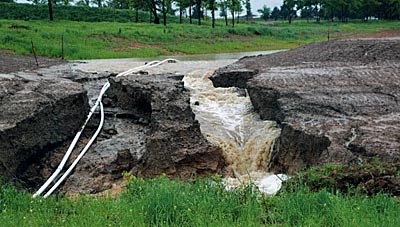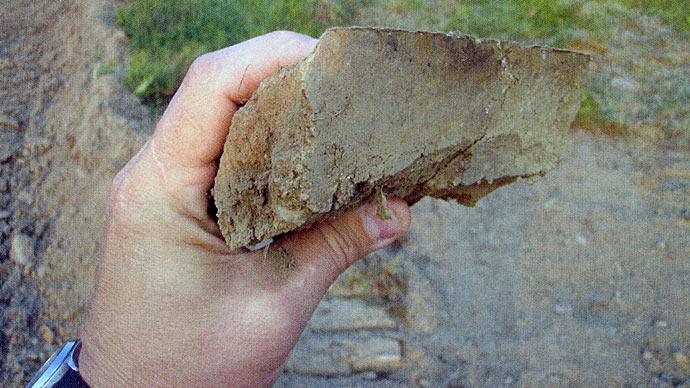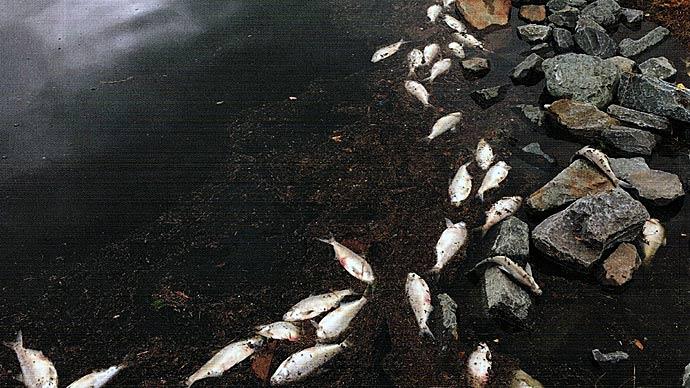
Sometimes things just don't work out as we expect. Sometimes there's a reason we understand, but if not, there's always a reason we'll soon understand, or we'll make the same decision later with similar consequences.
I'll always remember most of those hard lessons—some of them I pulled, others happened to pondmeisters of their own accord.
Way back in the mid-1980's there was a family property near Farmersville, Texas. The owner's nickname was "Catfish." He'd built a three-acre pond on a site that deserved a fifteen-acre lake. It had a big spillway to accommodate major floods. But the reason Catfish made a three-acre pond was because he didn't want to flood nine gorgeous, stately old native pecan trees. He had the earthmover sculpt and shape the shoreline mostly outside the drip lines where the trees could absorb water, but not drown. Plus, that put some shade around part of the shore in the flat creek bottom area. It was a beautiful setting. I helped him stock his fish and get them going. After that, his family enjoyed the property as a weekend retreat.
Several years into the pond's age, Catfish called me with a problem. I'd been in business for about six years by then, and my learning curve was steep. This pond had a tiny plant I didn't recognize. When you looked closely at the water, it looked like short, lime-green threads rolling in the water. Each thread was about as big around as a fine pencil lead and maybe a quarter-inch long. I figured it was a type of algae, but back then, there wasn't really a resource to quickly identify it. One key that I didn't recognize was a comment my crusty client made. "I treated it as algae with copper sulfate, and it didn't kill it."
That was an important statement, and I took it at face value. Confessing ignorance, I left the property with no idea what to tell him to do.
Catfish went to the local feed store, and bought an over the counter general herbicide that many people used back then, even though it wasn't labeled for use in water. The proprietor recommended mixing a quarter pound per acre, so using less than a pound in his three acres of water was the advice. Well, in Texas, there's a mindset that if this is enough, more is better. Catfish put the entire five-pound bag of the powdered product in his maturing lake to take out a plant that neither of us recognized—and do it fast—before an upcoming event at the farm.
He called a few days later, embarrassed and distraught. His fish population was dying, coming around the edge of the pond, gasping for air. I ran over there, asked him what had happened. When he told me what he'd done, I winced with gritted teeth. I didn't know much, but I knew he shouldn't have used that product, much less in that amount.
Listen to this—not only did he kill his precious fish—that herbicide also killed five of his big beautiful pecan trees. They absorbed it from the water and it killed them over a span of two years. It made him sick, those unintended consequences. So sick that he sold the property.
Oh, that plant? I later learned it was dead algae, breaking down and clinging to itself, rolling with wind currents in the water. His original treatment had done the job and we didn't understand that.
How about another one?

I was privileged to start working on a beautiful twenty-two-acre lake in central Texas. In 1986, with a goal of growing as many double-digit bass as possible, that landowner gave me a guided version of carte blanche to make this lake the best it could be. Over the next five years yours truly gained a huge amount of confidence (using theories) that I could bring to this lake some monster bass. This landowner was pretty protective of his fishery, as he should have been. He shared with his buddies, and enjoyed it often. He called one day, asking for an opinion about building a fence across his spillway to prevent fish from leaving during heavy rains. My opinion was not to do it, even though my experience was limited. I figured that if any fish left, it might be young of the year sunfish or minnows or baby bass or something small, and not necessarily that bad, but I truly didn't know. He called me in March of 1992 and I'll always remember our conversation. "Bob, remember that fence you said not to build across my spillway?" I answered in the affirmative. "Well, I did it anyway." I felt a sense of puzzlement drape across my brain. He told me what happened, "On New Year's Eve I was at a party in Dallas. It was raining outside and I really didn't want to be there. I wanted to be at the ranch. So, I climbed in my truck and headed that way and it was raining the entire distance. I pulled through the gate, down the drive and when my headlights shined on the lake as I turned into the garage shortly before midnight, I knew I was home. I went to bed and slept well as the rain pounded the roof. I woke up to clear skies and made some coffee. Just as I took a first sip of that cup, I looked out the big picture window at the lake. I spewed coffee all over the window. My lake was gone!"
His ranch had received about nine inches of rain over a fifteen-hour period. Debris flowed downstream and piled up against the spillway fence, made from chicken wire propped against t-posts. The top of the fence was a few vertical inches higher than the lowest point of his dam. With the makeshift fence collecting twigs, grass, and aquatic plants, water topped his dam and it didn't take long to breach and erode the structure, all the way .to natural ground level, about 25 feet below. When I visited a few days after his March phone call, my jaw dropped at the sight of a gaping hole, at least fifty feet wide at the top, and six to eight feet at the bottom, in a V-shape. The gushing water washed out the county road, took out a small barn, and knocked down a section of game-proof fence. He decided to repair the dam and restore the lake. As he consulted with engineers and earthmovers, I suggested we electrofish the two-acre hole of water left behind. That hole was the borrow pit, where dirt was taken to build the dam originally. Water stayed there because it was below natural ground level. We were both skeptical of any fish being left behind because of the catastrophic nature of the collapse and force of water, but we built a temporary ramp of plywood and used a winch on the front of a jeep to launch the boat. To our surprise, we captured and moved more than 300 adult bass, with quite a few in the 4-6-pound range and at least ten that topped double-digits. Those big fish stayed behind rather than be rushed downstream in the havoc. We moved those fish to other lakes and ponds around the ranch so we could collect and move them back when the lake was ready again. These were unintended consequences on several levels—the fence and the fish.
Here's another one for you to ponder, so to speak. A dentist from the big city had a serene place in the country. His lake was shaped similar to a hockey stick and each end of the stick was less than three feet deep. Much of it was less than two feet deep. That lake, as I recall, covered about ten acres. During our phone conversation he explained his lake had gradually become really muddy and now looked like a chocolate milk shake. We electrofished and figured out the cause. Several years earlier, all that shallow water had become inundated with bushy pondweed and a few other pondweed species. The plants were so thick that fishing was inhibited and the plants were growing in dense colonies as they progressed around the perimeter. He hired a local pond management company to eradicate the plants.
Mutually, they decided to take out about half the plants, and then monitor them for the benefit of the fishery. He decided to stock some triploid grass carp, at about four per acre, a common recommendation. Over a span of two more years, the grass carp did what they do, and knocked the plant life way back. But the lake began to show signs of turbidity he'd not expected. By the time we came on the scene with the electrofishing boat, the lake was overwhelmed with gizzard shad, stocked inadvertently with a load of threadfin shad from a nearby fish farm. Gizzard shad love and thrive in shallow, muddy water and were the basic culprits causing the turbidity. He'd not thought about those fish, and didn't really comprehend what was happening, because in the winter, water clarity would increase. The logical explanation about that was gizzard shad were not nearly as active in cooler months, which made good sense.
So, what did he do? He lowered the lake, let it sit for several months, and brought in some heavy equipment to rearrange the lake bottom and get rid of substantial amounts of shallow areas. He chose not to eradicate the fish, but hired a local company to bring their electrofishing boat and harvest as many big gizzard shad as possible and to evaluate the remaining fishery to make sure it could rebound with some big fish and be ready to enjoy when it refilled.
It refilled, and all was good for three or four more years, until the remaining shallow areas became choked with plants. He decided to use herbicides, because his grass carp had grown too large to be efficient. Those fish were knocking on the door of ten years of age and their usefulness was pretty well spent. Guess what happened when he took out half of the plants with herbicides? Oh, another piece of this puzzle leading to unintended consequences—he'd deepened about fifty percent of the shallow areas, meaning half of those areas were still shallow. It costs lots of money to push dirt, you know. Yep, you got it right. The gizzard shad flocked to that shallow water and turned the lake to chocolate again.
As fun as pond management can be, it can be equally annoying, especially when we don't know what we don't know and our decisions turn around on us. Like Catfish killing his precious pecan trees and our central Texas man building a $35 fence that took out his dam, to muddying our water with logical decisions, this pond management thing has consequences.
Oh sure, there are way more success stories that end with intended consequences, but these stories exemplify some thoughtful decisions gone haywire.
You can bet these three landowners had pause to think—after the fact.
Reprinted with permission from Pond Boss Magazine



